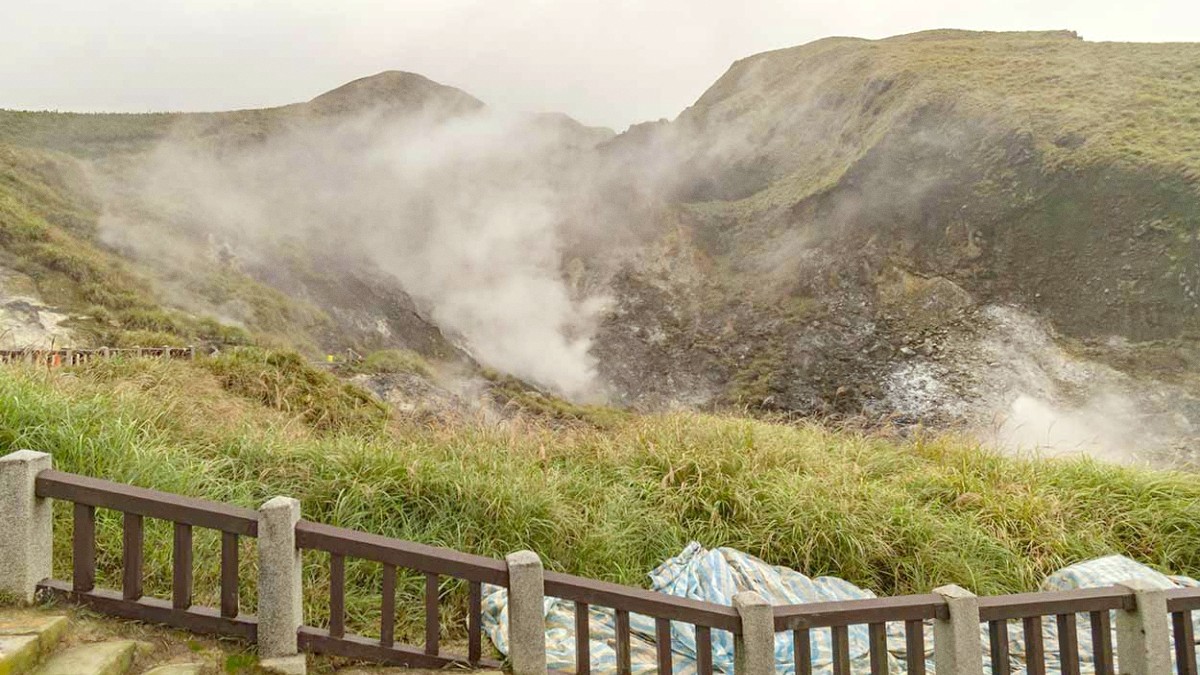
Taipei, Taiwan
Park elevations differ greatly, from lower valleys and agricultural zones like Zhuzihu, nestled among the mountains, to the exposed, windswept grasslands of Qingtiangang. Lower areas frequently possess a warmer, more humid feel, while higher elevations carry cooler air and more mist or rain. The park’s northern slopes extend towards Taiwan’s scenic northern coast, with ocean views possible from certain vantage points on clear days.
The Yangmingshan region is a history of aboriginal habitation, with evidence of early settlements and activities around its natural springs. These early residents lived off the land, drawing sustenance from its natural resources. The park area, especially its hot springs, gained recognition during the Qing Dynasty, though its secluded character limited development.
A significant chapter in Yangmingshan’s history began during the Japanese colonial period (1895-1945). The Japanese saw the hot springs' value for therapeutic properties and built infrastructure, especially in the adjacent Beitou district. They established bathhouses and resorts, transforming Beitou into a celebrated hot spring destination. Yangmingshan, then known as "Grass Mountain" (草山, Caoshan), served as a leisure retreat. The Japanese also started developing some of the park’s early trails and facilities, acknowledging its natural beauty and recreational potential. They conducted initial geological surveys, laying groundwork for understanding the area's unique volcanic features. This period left distinct architectural styles in Beitou, visible in the Beitou Hot Spring Museum, a former public bathhouse.
Yangmingshan National Park is a versatile natural retreat for Taipei residents and visitors. It presents a combination of activities and sights for various interests. The park’s volcanic landscape displays steaming fumaroles, sulfur deposits, and the distinctive "milk lake" at Lengshuikeng, all evidence of active geological processes. Hiking opportunities vary from accessible boardwalk trails, like Erhziping, suitable for families, to challenging climbs to the Qixing Mountain summit, Taipei’s highest peak. From the top, city and mountain views unfold on clear days.
Seasonal floral displays contribute to its charm. Later in spring, the Zhuzihu area becomes famous for its white calla lily fields, inviting visitors to stroll among the blooms. Autumn transforms the Qingtiangang grasslands with shimmering silvergrass, creating a different type of beauty. The park includes diverse wildlife, including various bird species and, notably, water buffalo grazing at Qingtiangang.
Hiking, hot springs, flower viewing, and wildlife observation.
Steaming fumaroles, sulfur deposits, and unique geological formations.
Cherry blossoms, calla lilies, and silvergrass transform the park throughout the year.
Observe various bird species and the iconic water buffalo.
Well-connected to Taipei by public transportation.
Beyond its natural features, Yangmingshan and its immediate surroundings present cultural and historical depth. The Beitou Hot Spring District, right at the park’s doorstep, creates a relaxing counterbalance to hiking, with numerous public and private hot spring baths. The Beitou Hot Spring Museum and the Thermal Valley narrate the story of the area’s Japanese colonial hot spring heritage.
Hiking experiences vary, from leisurely strolls on boardwalks to challenging ascents up volcanic peaks. Trails are well-maintained for explorer convenience.
Hot springs and fumaroles dot the park, a testament to its volcanic origins. Nearby Beitou features a variety of public and private hot spring baths.
A visit to Yangmingshan National Park creates a refreshing experience, combining outdoor adventure with moments of calm and opportunities to learn about Taiwan’s natural and cultural landscape. It is a testament to Taiwan’s commitment to preserving its natural heritage while making it accessible to all.
The park features distinct seasons, each with unique characteristics.
Mild temperatures, 18-25°C (64-77°F). Humidity gradually rises; occasional rain, especially in May. Fresh air, especially after light rain.
Hot and humid, temperatures 28-35°C (82-95°F). High humidity increases heat intensity. Afternoon thunderstorms are frequent, with heavy but brief downpours. Peak typhoon activity.
Pleasant temperatures, 20-28°C (68-82°F), with lower humidity and less rain. Skies are often clear, offering excellent visibility.
Taiwan's typhoon season runs from June to October, with peak activity typically July to September. Typhoons bring heavy rainfall, strong winds, and may cause landslides. Park closures, public transport suspension, and flight disruptions are possible. Always monitor local weather forecasts from sources like the Central Weather Administration (CWA). Follow all official advisories.
Entry requirements vary based on your nationality and the purpose of your visit.
Many nationalities qualify for visa-exempt entry for tourism or business. Stay duration varies. Citizens of the US and EU often receive 90 days. Check official Bureau of Consular Affairs (BOCA) website for current list.
Your passport must remain valid for at least six months beyond your intended date of entry. Proof of a confirmed return flight or an onward ticket to another destination is typically needed. While rarely checked, authorities can ask for proof of sufficient funds to cover expenses. If a visa is needed, bring your completed application form, recent passport-sized photos, and any additional documents specified.
Taiwan does not impose a general entry fee for tourism. Visa application fees apply only if your nationality requires you to obtain a visa before arrival.
Upon arrival, undergo standard immigration procedures. Present your passport for inspection at passport control and complete a customs declaration form, if needed. The process is generally efficient.
Yangmingshan National Park generally requires no permits for its main hiking trails. Some restricted ecological protection areas within the park may need advance application. Check the official Yangmingshan National Park website for current regulations.
Bureau of Consular Affairs: Comprehensive and current list of visa-exempt countries and stay durations.
IVisa, VisaHQ: Consumer services for visa applications and passport processes.
Official Park Website: Latest regulations and permit requirements for specific areas within Yangmingshan National Park.